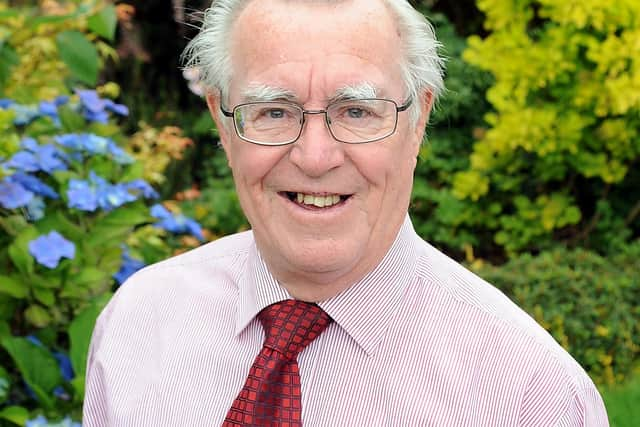Sandy's Garden ... Spring Will Be A Little Late This Year
and live on Freeview channel 276
At that time, I occasionally met an older gentleman who may well have passed on by now. His name escapes me, as do the details of his employment when he was economically active.
I do recall that he had been employed in the academic botanical world and I think that he had been a Professor of Botany, although I am not at all sure of the accuracy of this recollection.
Advertisement
Hide AdAdvertisement
Hide AdWhatever, he had a knowledgeable fascination with events in his private garden in East Lothian; and he had kept comprehensive records of what happened there for many years, noting meteorological data, recording when outdoor seedlings started to grow, when species produced their first buds and their first flowers, when the first autumn leaves fell and myriad other observations – all the information needed to compare one year in the garden with another, to discern any significant changes over a number of years and to examine longer-term trends.


And, something like three decades ago, he could say that local gardeners were experiencing substantial changes in the seasons of the year – instanced by such things as there being fewer frosty nights, winter giving way to spring earlier and an increasing incidence of mis-matches between the innate expectations of our garden wildlife and the seasonally-influenced realities of our garden plantlife.
Now, decades after he revealed these facts to the SGF, I read … on a University of Cambridge website … that, ‘Climate change is causing plants in the UK to flower a month earlier on average, which could have profound consequences for wildlife, agriculture and gardeners.’
Elaborating on this summary, Professor Ulf Büntgen of Cambridge’s Department of Geography, said, “We can use a wide range of environmental datasets to see how climate change is affecting different species, but most records we have only consider one or a handful of species in a relatively small area. To really understand what climate change is doing to our world, we need much larger datasets that look at whole ecosystems over a long period of time.”
Advertisement
Hide AdAdvertisement
Hide AdMy erstwhile associate had access only to his personal records from his own garden, of course: but he came up with the same findings as this study.
They found that the average first flowering date from 1987 to 2019 is a full month earlier than the average first flowering date from 1753 to 1986.
I cannot better Professor Büntgen’s words on the consequences of these findings.
“Plants, insects, birds and other wildlife have co-evolved to a point that they’re synchronised in their development stages. A certain plant flowers, it attracts a particular type of insect, which attracts a particular type of bird, and so on. But if one component responds faster than the others, there’s a risk that they’ll be out of synch, which can lead species to collapse if they can’t adapt quickly enough.”
Advertisement
Hide AdAdvertisement
Hide AdThe team at Cambridge University has no doubt that these changes in the natural world are attributable to global warming, which is human-induced, at least in part. We really must ask ourselves what we are doing to the only world we’ve got!
Comment Guidelines
National World encourages reader discussion on our stories. User feedback, insights and back-and-forth exchanges add a rich layer of context to reporting. Please review our Community Guidelines before commenting.